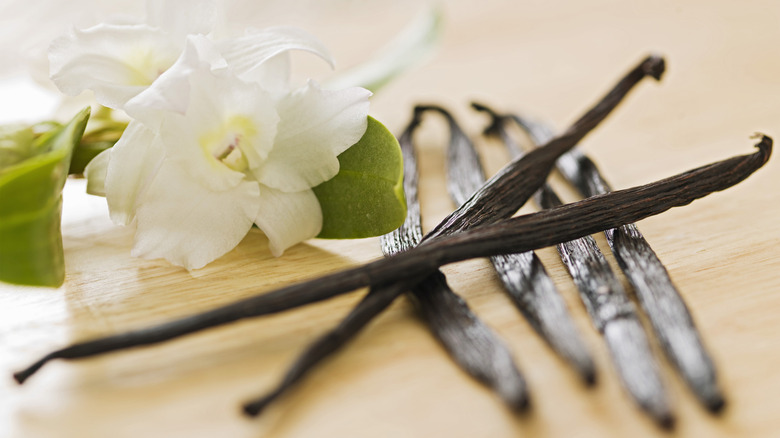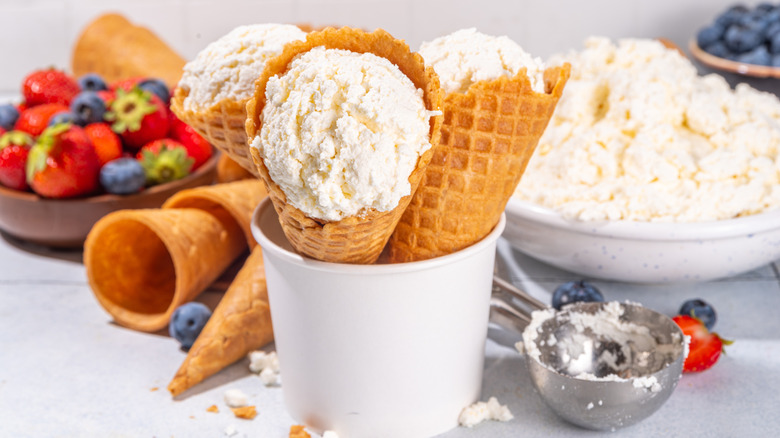Should You Bake With Vanilla Paste Instead Of Vanilla Extract?
Being that you're the foodie extraordinaire that you are, it's likely that you're always searching for a way to up your baking game. Savvy cooking moves can be as simple as switching out your vanilla extract for vanilla bean paste the next time you bake a cake, cookies, or custards. Doing so gives your baked goods a major increase in their flavor levels. That's one of the chief reasons why many bakers skip the extract and go straight for the vanilla bean paste when they're making pastries and other baked goods.
Both of these flavor bombs come from the vanilla bean, unless you're working with a synthetic extract. With vanilla extract, the vanilla bean infuses flavor into an alcohol-based solution. The alcohol takes on the flavor of the beans.
To make the paste, powdered vanilla bean and strong vanilla extract are mixed together. This combo gives the paste such a punch of flavor. It's also why vanilla bean paste should be your go-to for recipes that really need to be vanilla-forward, like a recipe for sugar cookies. Micro-dots of vanilla bean peek out through the thick dark paste. It's a total sensorial experience to have it in your baked goods.
Working with vanilla bean paste in recipes
Technically, you can use either paste or extract for baking. Some recipes even ask you to use vanilla beans scraped straight out of a pod, sometimes called vanilla caviar. But if it's a powerful vanilla flavor that you want in your recipes, the vanilla paste is usually a better bet than extract. Just know if you've never used it before that vanilla paste isn't a liquid. It's thick and viscous — so much so that it needs to be scooped out of the jar. It won't pour out easily like extract. From a consistency standpoint, it's like dropping a tablespoon or two of your favorite jam or jelly into your cookie or cake batter and stirring it in. But because it's pasty, it folds into recipes more readily than your vanilla extra does.
If you have to choose between the two (because you're trying to conserve the paste), use this rule of thumb. Use vanilla paste when you're making frosting, ice cream, whipped cream, pudding, oatmeal, smoothies, and creme brûlée. More traditional pastries and baked goods like cake batters and cookie doughs typically call for vanilla extract. However, if you're baking to impress or trying to give more punch to a recipe, you may want to buck tradition and use vanilla paste instead of the extract.

